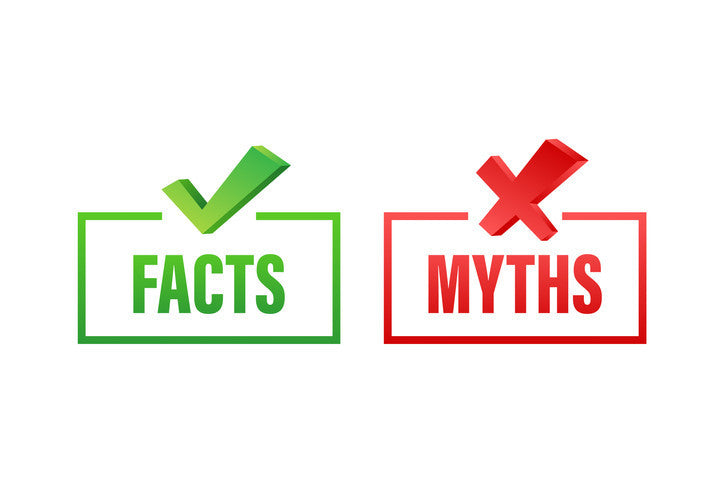Orthopedic footwear has come a long way over the years, evolving from simple medical necessities to stylish, comfortable shoes that support a wide range of foot health needs. Despite the advancements in design and technology, several myths about orthopedic shoes still persist, leading people to dismiss their potential benefits.
In this blog post, we’ll debunk the most common myths surrounding orthopedic footwear to help you make more informed decisions about your foot health. Whether you’re dealing with chronic pain, recovering from an injury, or simply looking for added comfort, understanding the truth behind these myths is essential to choosing the right footwear.
Myth 1: Orthopedic Shoes Are Ugly and Unfashionable
Fact: Modern orthopedic footwear is far from unfashionable.
One of the most enduring myths about orthopedic shoes is that they are bulky, unattractive, and only for older people. While this may have been true in the past, it’s no longer the case. Today’s orthopedic shoes are designed with both aesthetics and function in mind.
Major brands like Nike, New Balance, Orthofeet, and Saucony have all embraced stylish designs that blend therapeutic features with contemporary trends. From sleek sneakers to casual loafers and even formal shoes, orthopedic footwear is now available in a wide range of styles that are as stylish as they are supportive. The emphasis is on creating footwear that provides the best of both worlds—comfort and fashion.
Myth 2: Orthopedic Shoes Are Only for People with Serious Foot Conditions
Fact: Orthopedic shoes are beneficial for anyone looking to improve foot comfort and health.
While orthopedic shoes are indeed essential for those with chronic foot conditions such as plantar fasciitis, bunions, or arthritis, they are not exclusively for people with serious foot issues. In fact, anyone can benefit from orthopedic footwear, especially individuals who spend long hours on their feet, experience occasional foot pain, or suffer from poor posture.
Orthopedic shoes are designed to provide support, reduce pressure points, and improve alignment, making them ideal for anyone seeking to prevent foot problems and enhance overall comfort. Whether you’re an athlete, a busy professional, or simply someone who wants to take care of their feet, orthopedic shoes can offer the extra support and cushioning you need.
Myth 3: Orthopedic Shoes Are Only for the Elderly
Fact: People of all ages can benefit from orthopedic footwear.
While orthopedic shoes have historically been marketed to older adults, they are beneficial for people of all ages. Foot health is important at every stage of life, and young adults, athletes, and even children can experience foot problems that orthopedic shoes can address.
For example, athletes often suffer from stress fractures, shin splints, and foot injuries caused by high-impact activities. Orthopedic shoes can help alleviate pressure, provide cushioning, and improve posture, enhancing both performance and recovery. Similarly, children with flat feet or alignment issues can benefit from shoes that promote healthy foot development.
Don’t let the misconception that orthopedic shoes are just for the elderly keep you from enjoying their benefits. Good foot health is for everyone, regardless of age.
Myth 4: Orthopedic Shoes Are Too Expensive
Fact: Orthopedic footwear comes in a variety of price ranges, making it accessible for most people.
While it's true that some high-quality orthopedic shoes can be expensive, there are many affordable options on the market. The price of orthopedic footwear can vary based on factors like brand, materials, and design, but there are plenty of budget-friendly options that still provide the necessary support and comfort.
Furthermore, investing in a pair of orthopedic shoes can save you money in the long run by preventing costly foot surgeries or the need for medical treatments due to poor foot health. The long-term benefits of proper foot support often outweigh the initial cost.
Myth 5: Orthopedic Shoes Are Only for Flat Feet
Fact: Orthopedic shoes can help with a variety of foot conditions, not just flat feet.
Another common myth is that orthopedic shoes are only designed for people with flat feet. While orthopedic footwear is incredibly beneficial for those with flat feet or fallen arches, they are also helpful for people with a variety of other foot issues, including:
- High arches: Shoes with cushioned insoles and support systems can alleviate pressure on the foot and reduce pain associated with high arches.
- Bunions: Orthopedic shoes with wide toe boxes and cushioning can reduce pressure on bunions and prevent further irritation.
- Heel pain: For those suffering from plantar fasciitis or heel spurs, shoes with proper arch support and shock absorption can help reduce heel pain.
- Arthritis: Shoes designed with motion control and cushioning can help reduce joint pain and inflammation.
In short, orthopedic shoes are not limited to any single condition—they are versatile and can be tailored to support a wide range of foot health needs.
Myth 6: Orthopedic Shoes Are Hard to Break In
Fact: Many orthopedic shoes are designed for immediate comfort.
In the past, some orthopedic shoes were made with rigid materials that required a long break-in period. However, modern orthopedic footwear is crafted with soft, flexible materials that mold to the foot right away. Features like memory foam footbeds, cushioned insoles, and adjustable straps ensure that the shoes are comfortable from the moment you put them on.
While some people may still need a short adjustment period as their feet get accustomed to the new structure and support, most orthopedic shoes are designed to provide instant comfort and support.
Myth 7: Orthopedic Shoes Are Only for Specific Foot Problems
Fact: Orthopedic shoes can improve overall foot health and prevent future problems.
Another myth is that orthopedic shoes are only for people who already have a specific foot issue. In reality, orthopedic shoes can also help prevent future foot problems by providing the right support, alignment, and cushioning. Wearing orthopedic footwear can help maintain healthy posture, reduce the risk of developing conditions like plantar fasciitis or bunions, and prevent general foot fatigue.
Even if you don’t have a diagnosed foot condition, choosing orthopedic footwear can be a proactive measure to maintain foot health, especially if you engage in activities that put a strain on your feet.
Myth 8: Orthopedic Shoes Are Only for Non-Sporting Activities
Fact: There are orthopedic shoes designed specifically for sports and physical activities.
Many people believe that orthopedic shoes are only suitable for casual or everyday use. However, there are specialized orthopedic shoes designed for athletes and individuals who engage in physical activities like running, hiking, or playing sports.
Brands like White Sole Company offer athletic Insoles with orthopedic features such as superior arch support, cushioning, and motion control. These insoles can improve performance, reduce injury risk, and help athletes recover from foot-related issues. Whether you’re a weekend warrior or a professional athlete, orthopedic footwear can enhance your sports experience and help prevent long-term damage to your feet.
Conclusion: Don’t Let Myths Hold You Back From Better Foot Health
Orthopedic footwear is designed to provide the support, comfort, and relief your feet need to stay healthy, regardless of your age or foot condition. By debunking these common myths, we hope you now have a clearer understanding of the true benefits of orthopedic shoes. Whether you're experiencing foot pain or just want to take proactive steps to protect your feet, the right pair of orthopedic shoes can make a significant difference in your overall well-being.
If you’re ready to experience the comfort and support orthopedic footwear offers, don’t let misconceptions hold you back. Your feet (and your future self) will thank you!
Have any questions about orthopedic shoes? Leave them in the comments below or reach out to us for more information!

